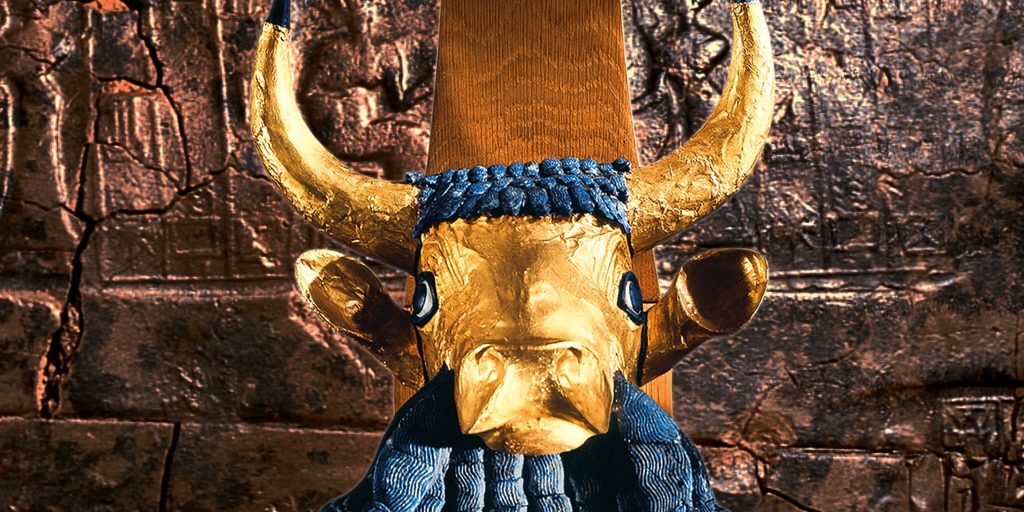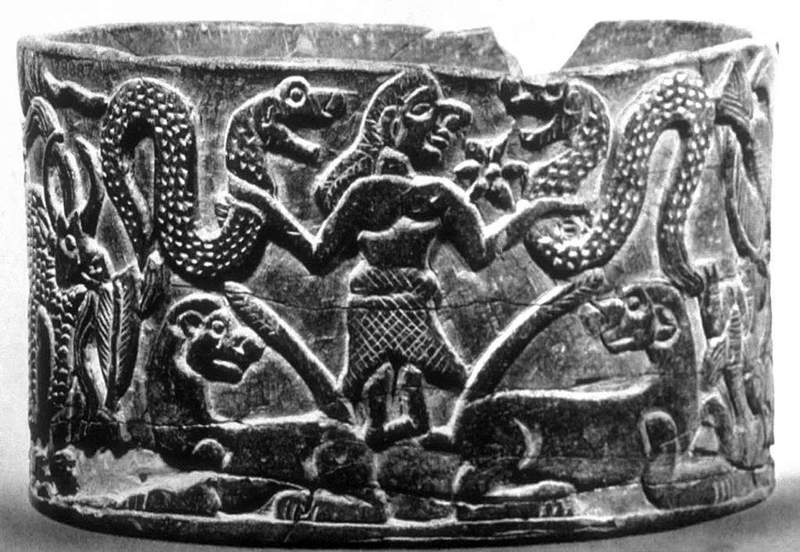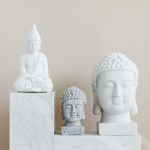In ancient Mesopotamia, art functioned as an enormous language. Artists did more than simply depict the spirit of the universe. They incorporated substantial cultural and spiritual meaning into their works of art. This ancient birthplace of civilization witnessed its artists utilization of animals and mythical beings. These were beyond aesthetic decisions. They were rich in symbolic meaning. A vivid tapestry of life is produced from stones, metals, and clay. It exhibited divine units, natural elements, and mankind’s complex relationships. Each artwork, whether a gigantic statue or an insignificant relief, presented stories about gods, nature, and human achievements. Mesopotamian art, thus, goes beyond basic depiction. It becomes a conversation between ancient humans and the world around them, exposing their views on the divine and their position in the universe.
The Lion: A Symbol of Kingship and Protection
Among many different animals represented in Mesopotamian art, the lion stands out as an image of kingship and celestial protection. Lion figures, both majestic and dangerous, were frequently found protecting the entryways to temples and places, functioning as both guardians and symbols of the reigning monarch’s power. These gorgeous creatures were more than just ornamental; they were powerful symbols of the ruler’s capacity to protect and guide their people.

The Bull: Strength and Fertility Embodied
Another animal commonly projected in Mesopotamian art was the bull, with its massive physique and terrifying horns. It signified force and fertility, which were essential attributes in ancient Mesopotamian agrarian societies. The Bull was commonly linked to the gods of agriculture and storms, representing both the five-giving force of rain and the utter force required to plow the fields.

Mythical Beings: Hybrid Creatures and Their Meanings
Hybrid creatures, who possessed characteristics of numerous animals and, on occasion, humans, played important roles in Mesopotamian mythology and art. The Lamassu, a safeguarding god with a human head, bull or lion body, and eagle wings, guarded sacred locations. These hybrids reflected a combination of the finest characteristics of each species, representing protection, intelligence, and divine favor bestowed on the towns and temples they maintained.

The Serpent: Dual Representations of Wisdom and Danger
Signifying both wisdom and danger. Serpents were equated with Enki, the pagan deity of wisdom, and were praised for their sharp minds and accordance with the underworld. They also reflected on the horrors that lay outside the protected limits of the city walls, warning the inhabitants of the constant potential threats that awaited them in the unknown.

Eagles and Birds: Messengers of the Gods
Mesopotamian artists represented eagles and other birds in reliefs and pottery. They depicted the relationship between the celestial and terrestrial realms. The people regarded these creatures as messengers of the gods, conveying heavenly directives to human beings on earth. The artists portrayed the birds as intermediaries between the divine and mortal realms, symbolizing the connection between the heavens above and the earth bellow. Their willingness to soar high above the ground symbolized freedom and divine oversight as they guarded Mesopotamian villages.

The Role of Animals in Rituals and Ceremonies
Animals were fundamentally related to Mesopotamian culture’s rites and celebrations, as well as its art. Sacrificial ceremonies sometimes included animals viewed as the holders of divine intent, with offerings intended to placate the gods and guarantee favorable treatment for humans. These practices highlighted the Mesopotamians’ strong spiritual ties to the animal realm, which was as much about cohabitation as divine providence.
The symbolic utilization of animals and hybrid creatures in Mesopotamian art reveals profound intricacies of ancient ideas and beliefs. These presentations were not only decorative. They acted as conduits between the heavenly and the worldly, revealing the Mesopotamians’ intricate spirituality. Each piece mentioned a narrative, provided a warning, or gave a blessing. Scholars and enthusiasts alike examine these masterpieces. They attempt to comprehend a culture that valued equilibrium with the heavenly and natural realms. Animals have an important role in expressing authority, safeguarding, and wealth, according to meticulous research. Mesopotamian art provides an exceptional glimpse into the deepest levels of human culture, showcasing our earlier stages’ knowledge and connectedness to the world around them. This legacy, rich in symbolism and meaning, continues to excite and teach, transcending millennia with timeless truths.






